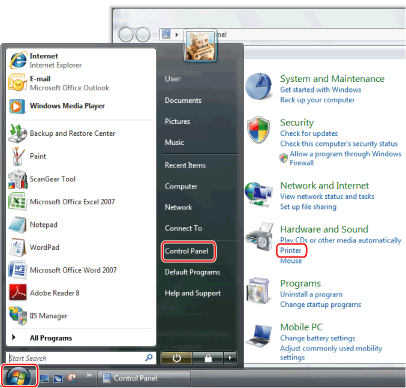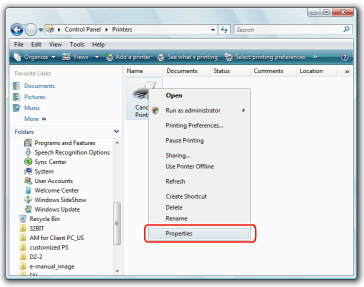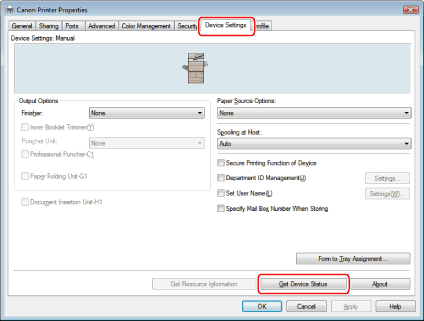When first using the printer driver, or changing the printer settings, obtain or set the printer information by following the procedure below. To set the printer configuration, follow the procedure below.
|
Note
|
|
If you are using Windows 2000/Windows XP/Windows Server 2003, full control access is required to configure the settings for the printer. Full control access is available for users who are registered as Administrators or Power Users in the Windows system settings.
The display may differ according to the operating system, as well as the type and version of the printer driver.
|
1.
On the [ ](Start) menu, click [Control Panel] → [Printers].
](Start) menu, click [Control Panel] → [Printers].
 ](Start) menu, click [Control Panel] → [Printers].
](Start) menu, click [Control Panel] → [Printers].
The printers folder is displayed.
|
Note
|
|
If you are using Windows 7, on the [
 ](Start) menu, click [Devices and Printers]. ](Start) menu, click [Devices and Printers].If you are using Windows XP Professional/Server 2003, on the [Start] menu, click [Printers and Faxes].
If you are using Windows XP Home Edition, on the [Start] menu, click [Control Panel] → [Printers and Other Hardware] → [Printers and Faxes].
If you are using Windows 2000, on the [Start] menu, point to [Settings] → click [Printers].
|
2.
In the printers folder, right-click the icon of the printer whose settings you want to configure → click [Properties] (or [Printer properties]) from the displayed menu.

The printer properties dialog box is displayed.
1.
Select [Device Settings] sheet → click [Get Device Status].

|
Note
|
|
If the information request returns an error message, you need to configure the settings (such as paper feed options, paper output options, etc.) manually.
If the printer and computer are connected via USB or a WSD (Web Services on Devices) port, the [Get Device Status] function is unavailable. You need to configure the settings manually.
|
4.
Confirm the settings such as paper source options and output options → click [OK].